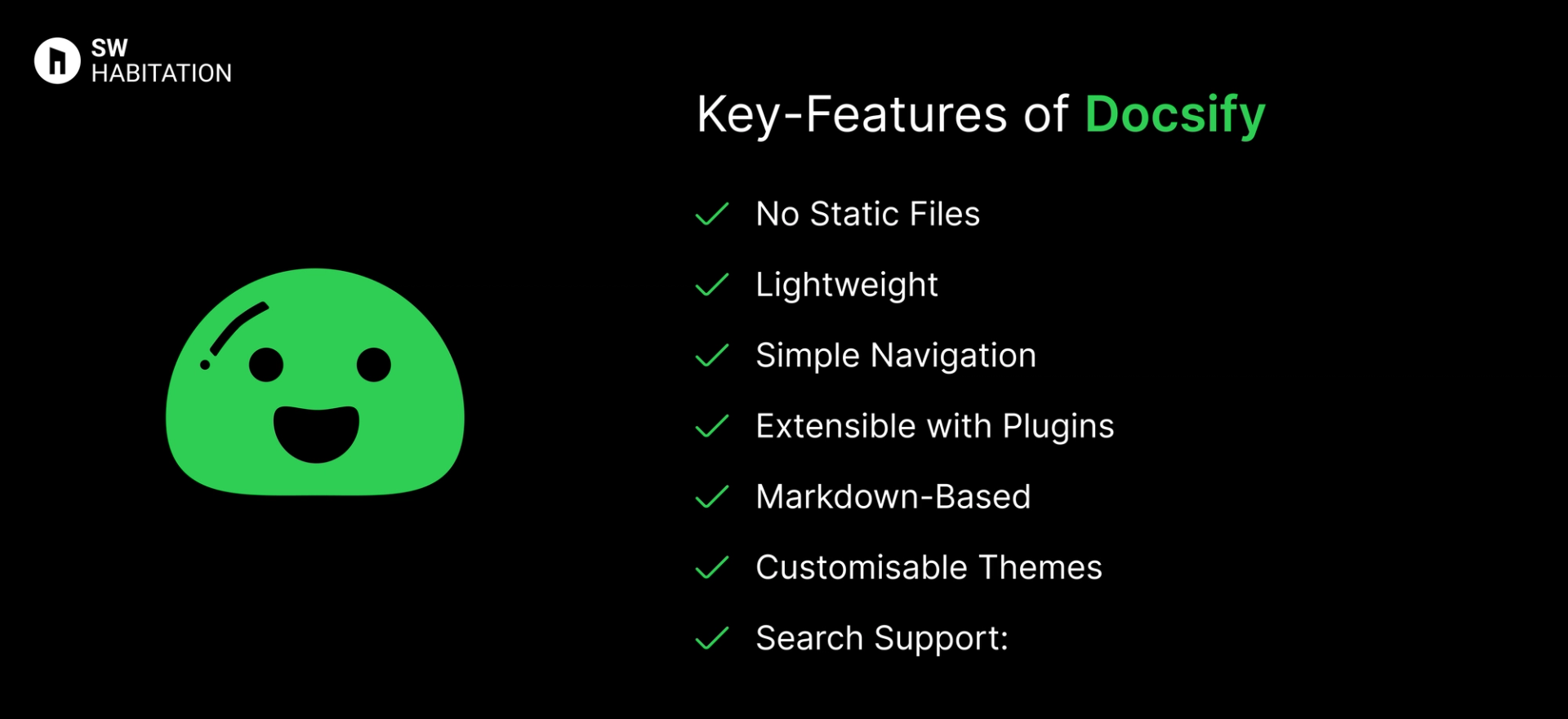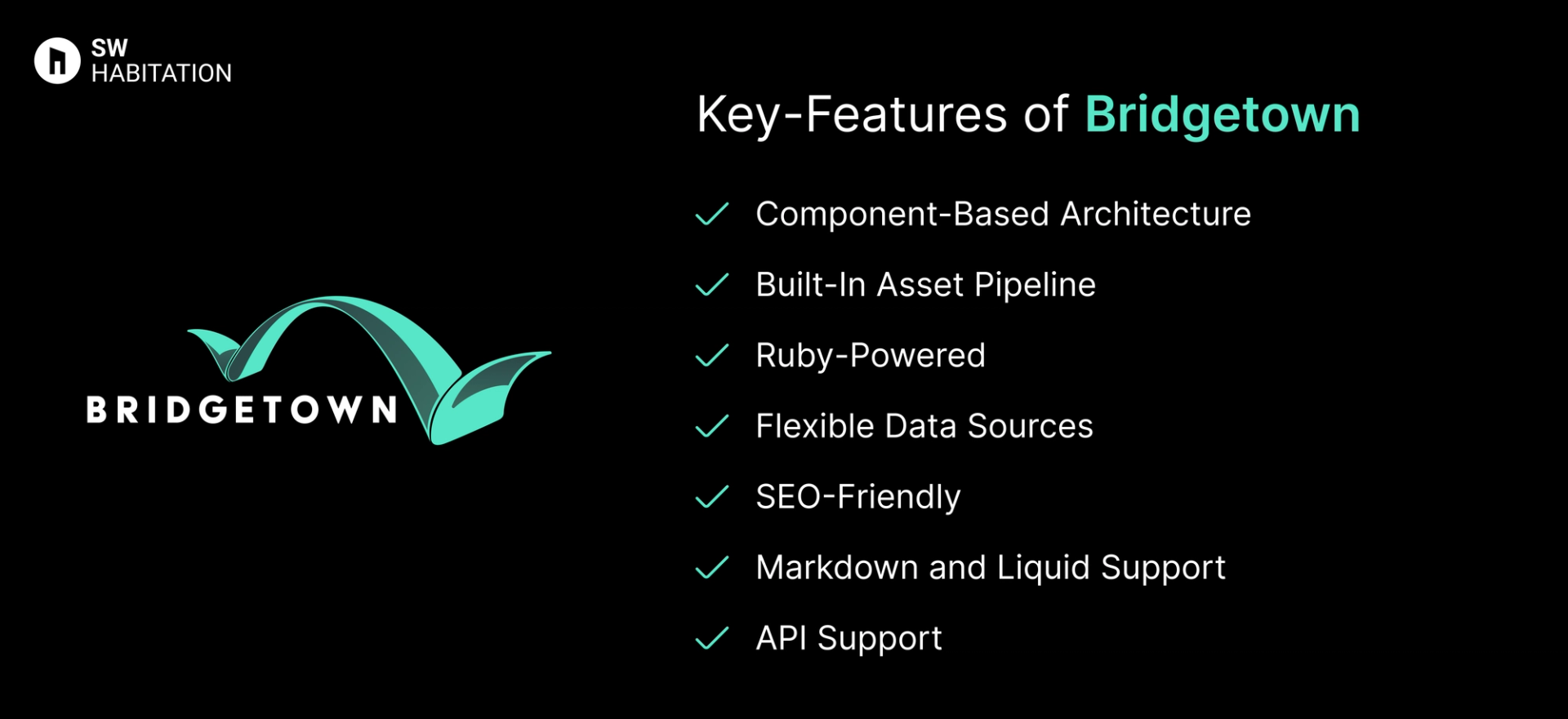Docsify vs. Bridgetown

Docsify

Bridgetown
So, you know when you want to build a website or app, but doing everything from scratch feels kinda overwhelming? That’s where web frameworks come in. They’re like a ready-made set of tools and building blocks that help you get things up and running way faster. Instead of figuring out every little piece yourself, a framework gives you a solid base to build on, and lets you focus on making something cool.
What is Docsify?
Docsify is a documentation site generator that works by rendering Markdown files in the browser.
Unlike traditional static site generators, docsify doesn’t pre-generate static HTML files. Instead, it loads and renders content dynamically using JavaScript. This makes it incredibly lightweight and super easy to maintain, no need to rebuild the site every time you make a change.
Key Features of Docsify


- No Static Files: No need to pre-generate pages it renders them dynamically.
- Lightweight: The core library is tiny its just a single JavaScript file.
- Simple Navigation: Automatically generates sidebars and navigation.
- Extensible with Plugins: Add features like pagination, copy-to-clipboard, or Google Analytics.
- Markdown-Based: Write your docs in Markdown for simplicity.
- Customisable Themes: Adjust the look and feel with ease.
- Search Support: Built-in search functionality.
Advantages of Docsify
- Great for Small Projects: Perfect for simple documentation sites or project wikis.
- Super Easy Setup: No build step needed just drop a few files into your project.
- Light and Fast: No bulky dependencies, just pure simplicity here.
- Instant Updates: Changes reflect instantly without rebuilding the site.
- Minimal Learning Curve: If you know Markdown, you’re already halfway there.
Disadvantages of Docsify
- JavaScript Dependency: Requires JavaScript to render content, so it won’t work well in environments where JavaScript is disabled.
- Limited Scalability: Best for smaller documentation projects.
- No Static Files: Not ideal for SEO, as content is rendered client-side.
What is Bridgetown ?
Bridgetown is a static site generator built with Ruby.
It is designed to help developers create fast, modern websites with ease. It’s often seen as the spiritual successor to jekyll, with a fresh take on static site generation. Bridgetown combines the power of Ruby with a modern development workflow, supporting things like webpack, dynamic content with APIs, and flexible templating options.
Key Features of Bridgetown


- Component-Based Architecture: It supports reusable components for cleaner code.
- Built-In Asset Pipeline: It integrates with webpack for managing assets like CSS and JavaScript.
- Ruby-Powered: It leverages the simplicity and power of Ruby.
- Flexible Data Sources: It pull content from YAML, JSON, CSV, or external APIs.
- SEO-Friendly: It generates clean, semantic HTML with built-in SEO optimisations.
- Markdown and Liquid Support: It writes content in Markdown and use liquid for templating.
- API Support: It fetches dynamic content from APIs while keeping the site static.
Advantages of Bridgetown
- Extensible: Custom plugins and extensions for advanced use cases.
- Fast and Lightweight: Generates static HTML for quick load times.
- Great for Ruby Developers: Familiar tooling and language.
- Easy Content Management: Ideal for blogs and documentation sites.
- Powerful Templating: Supports Liquid, ERB, and other templating engines.
Disadvantages of Bridgetown
- Ruby Knowledge Required: Best suited for Ruby developers.
- Smaller Community: Compared to older SSGs like Jekyll, the community is still growing.
- More Setup: Requires setting up a Ruby environment, which may be unfamiliar to non-Ruby developers.
Comparison Between Docsify vs Bridgetown
Use Cases of Docsify
- No-Build Workflows: If you hate build steps, Docsify’s dynamic loading is a dream.
- Markdown Lovers: Write everything in Markdown and let Docsify handle the rest.
- Small Projects: Ideal for simple projects, personal wikis, or README-driven sites.
- Quick Documentation: Need a doc site in minutes? Docsify delivers.
Use Cases of Bridgetown
- Content-Driven Sites: Great for blogs, documentation sites, and portfolios.
- Ruby Lovers: If Ruby is your jam, you’ll feel right at home.
- Small Projects with Big Potential: Clean structure and fast build times make it a good fit for smaller projects that may grow.
- Custom Workflows: Offers flexibility in handling assets and external data sources.
Other Resources
Conclusion
Web frameworks make building websites and apps a whole lot easier. Whether you’re working on a personal project or something big for work, they help with the heavy lifting—like routing, design structure, and how everything connects.
With support for things like server-side rendering, optimized performance, and developer-friendly features, these tools let you create faster, smarter, and cleaner websites. Just pick the one that fits your style, and start building something awesome 🚀
Frequently asked questions
Is Docsify beginner-friendly?
Absolutely, Docsify is designed to be simple and easy to set up plus its is ideal for anyone who needs to create documentation fast.
Can I customize Docsify?
Yes, Docsify is highly customizable with themes, plugins, and configuration options. You can tailor it to fit your branding or specific project needs.
Does Docsify require a static build?
Nup, Docsify generates your docs on-the-fly in the browser. Just write Markdown, and Docsify takes care of the rest.
Is Docsify good for small projects?
Yes, Docsify is excellent for creating quick documentation sites and smaller projects without the overhead of a static build process.
Is Bridgetown actively maintained?
Yes, Bridgetown has an active community, and it’s regularly updated with new features and bug fixes. You’ll always have access to the latest updates.
Is Bridgetown content-friendly?
Yes, It works well with Markdown, custom components, and layouts, so you can easily create structured content.
Is Bridgetown only for Ruby devs?
Yes, Bridgetown is built for Ruby developers and works well with the Ruby on Rails ecosystem. If you’re familiar with Ruby, you’ll love its seamless integration.
Is Bridgetown a good Jekyll alternative?
Bridgetown is a modern alternative to Jekyll, with a more flexible architecture, faster build times, and improved plugin support.
